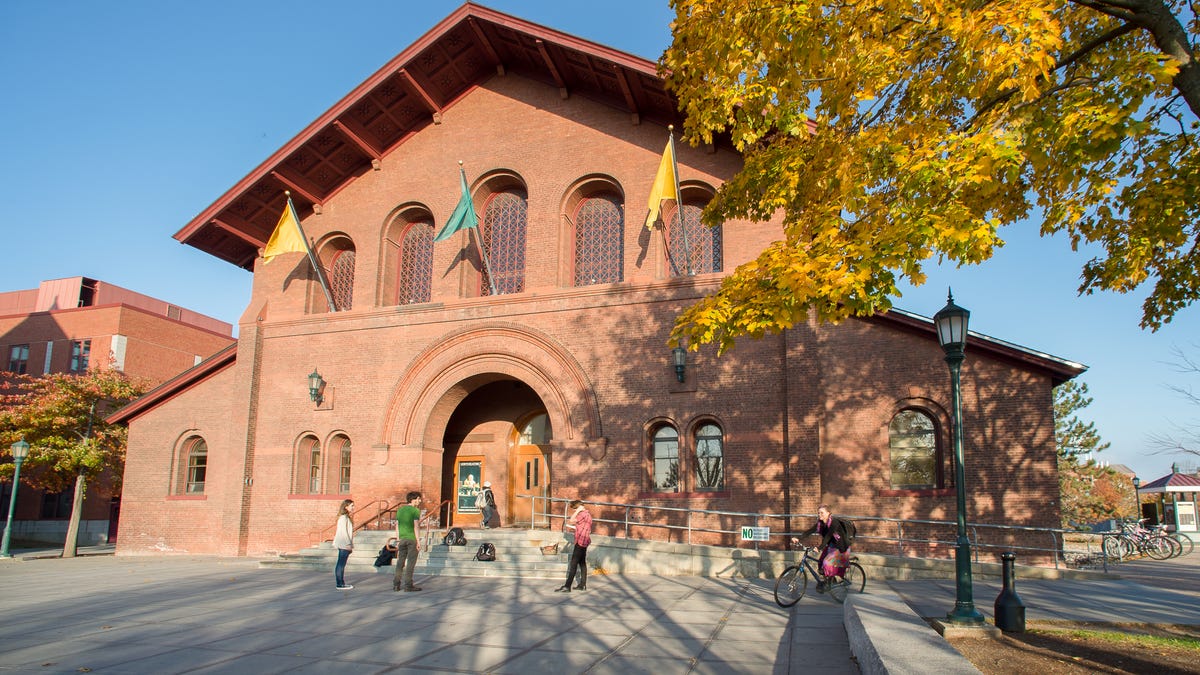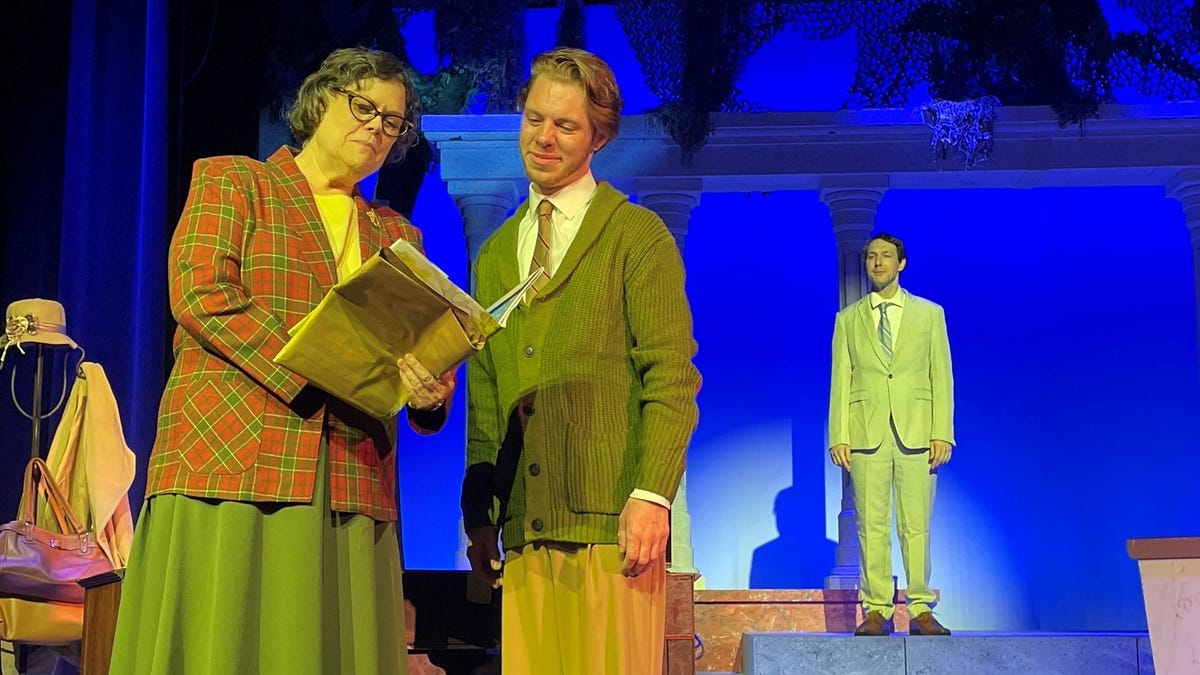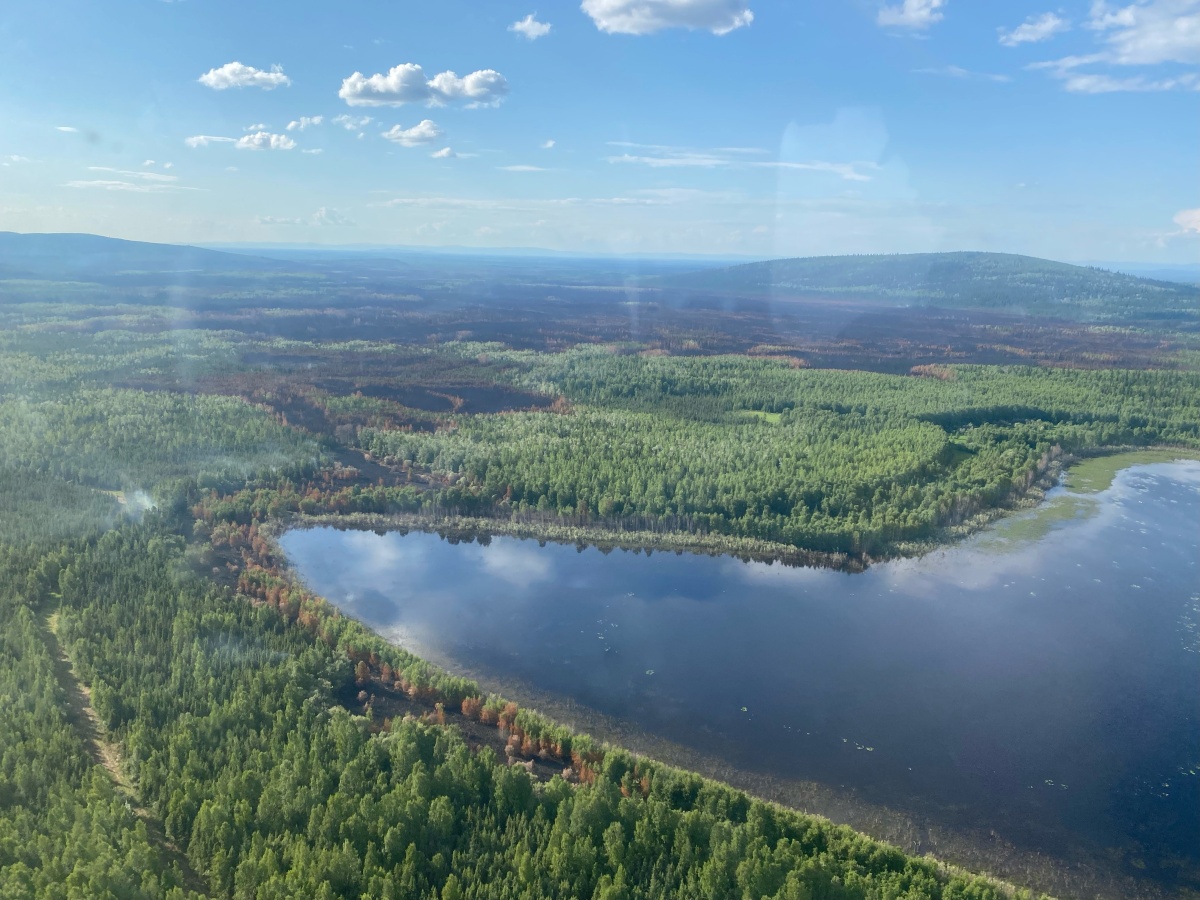Oregon
Ashland New Plays Fest 2023: families facing tough times and choices | Oregon ArtsWatch

Even though theater is in trouble, both in Oregon and beyond, I still found many memorable moments in the couple dozen or so plays I attended in 2023. I won’t attempt a comprehensive review — ArtsWatch’s excellent theater writers Marty Hughley and Darlene Ortega hit most of my highlights, and many more — but definitely want to offer a mighty shout-out to stellar shows from Shaking the Tree, Fuse, the revitalized Bag&Baggage Productions, HART and many others.
I also encountered one considerable pleasant, non-local surprise: a touring big-name musical that actually offers promise for the musical’s future instead of wallowing in its past. The sugary pop songs of Six, which came to Portland’s Keller Auditorium in July, aren’t necessarily my jam, and I’m generally unmoved by theater that tries to cover sweeping swaths of history rather than focusing on the unities of time and place. And admittedly, the show’s creators never quite figured out how to conclude it, instead whiffing on a tacked-on tie-up that told instead of showing.

But up until then, the sparkling show’s tight pacing, gleeful embrace of the rock concert concept, sly, character-based humor, pop-culture sensibility, and respect for a modern audience’s intelligence and attention span all offer lessons in how to make musicals truly sing for today’s audiences. The proof was also offstage, in the sold-out houses and laughing, cheering, demographically diverse (including much younger than usual) audiences.
***
Still, my most memorable 2023 theatrical experience came not in Portland, but in Ashland. And not where you’d expect. I wasn’t able to make it to the troubled Oregon Shakespeare Festival this year, but a week after it closed, I ventured a few blocks away to Southern Oregon University for the latest edition of the annual Ashland New Plays Festival, which began 30 years ago. Amid so much bummer news about American theater, I found plenty of hope for its future there.
For a detailed description of the nonprofit festival’s origins and approach, check my ArtsWatch feature and review of last year’s festival. Briefly: The plays are curated by the community, with dozens of volunteers (most from Southern Oregon) reading, cumulatively, hundreds of script submissions, discussing them in groups, winnowing them down to a dozen, from which Artistic Director Jackie Apodaca, an SOU theater professor, then chooses the final group.
This year only three made it to SOU’s Main Stage Theater, where each received two staged readings (no props, sets or costumes, with actors standing in place or seated in chairs on stage, scripts in hand) over the weekend of October 19-22.
Many of the actors are professionals from OSF and beyond, directed by experienced professional directors, so performance quality is uniformly compelling. Each performance is followed by a Q&A session featuring the playwrights, directors, and cast members.
As before, I came away impressed by the audience members’ insightful questions and responses. The festival no doubt owes some of its high degree of engagement and conversation to the fact that many audience members actually participated in the curation process. They really are the secret sauce of ANPF’s success.
Because of the single-weekend run and limited rehearsal time, and because these are staged readings of scripts still in development, it’d be unfair to provide a standard review of these productions. (Don’t let that discourage you from attending: Good staged readings can be more powerful than full productions, as Shaking The Tree’s recent offering of Federico Garcia Lorca’s The House of Bernarda Alba and numerous Fertile Ground Festival of New Works shows have proved.) But all three scripts — which coincidentally revolved around interfamily interactions — offered plenty of worthwhile ideas that merit further development, along with a few shortcomings. Here’s an overview of what I saw, aimed at helping the playwrights take their work to the next stage.
Death Foretold

The strongest audience response erupted after Ashland, which admittedly had a home court advantage: Minneapolis-based Ashland native Isabel Estelle’s play drew old friends and fans from the playwright’s home state. There’s nothing in the script that necessarily binds the story specifically to Oregon, although the setting does require both a mountain and legal acceptance of death with dignity laws. Estelle, who received a standing O as she took the stage before the post-show Q&A, is telling a universal story about family.
This one is thrown into turmoil by a young woman’s sudden terminal illness diagnosis, as her siblings and new partner negotiate their own and each other’s complex, conflicting, and, as her condition progresses over a summer in Ashland, evolving responses to the imminent trauma. All love the dying woman in their own way, and all must reconcile her needs with their own — denial, closure, acceptance and more.
Because they’re all drawn as fundamentally good and loving people, serious conflict seldom flares. Given that the action is set in the Northwest (think Oregon/Minnesota nice) rather than, say, the South, over-the-top emoting would run the risk of melodramatic inauthenticity. But that also means the tension feels a little muted, despite the magnitude of the stakes. And the flashback finale coda proved not just anachronistic but also anticlimactic. Still, there’s plenty of drama in the tough physical and emotional realities expertly detailed here.
Estelle also commendably keeps the action tight and moving (in both senses), which further avoids wallowing in grief, but also leaves a couple of characters (the protagonist’s sister and a hospice nurse) somewhat underdrawn. The current version also seems to need an additional backstory scene that might set up the ferocity of the protagonist’s partner’s resistance to her lover’s chosen course. While I too often find contemporary dramas overly didactic or just too darn long, I enjoyed these characters so much that I’d trade a bit more length to achieve greater depth.
Even if Ashland mostly eschews dramatic fireworks, it finds surprising power in, of all places, its, er, dead-on use of humor. “Grief and humor are inseparable to me,” Estelle explained in a program note, “because dying is such an absurd, unceremonious thing, it’s impossible for it not to be funny.” Ashland’s humor reflects how real people (especially the protagonist’s brother) often deal with grief, and gives the audience a break from what could have been strictly a weep-fest. “It’s about taking care of the people you love,” director Caroline Shaffer noted in the post-show Q&A. “Humor is part of that.”
Of course, tears do emerge, on stage and off — but they’re earned, not wrung forth by easy sentimentality. Death is something we all must face sooner or later, and Ashland skillfully and movingly navigates the difficult, uncertain emotional terrain between toughness and tenderness, poignance and laughter, living and dying. I hope other theaters, especially in Oregon, will produce it.
Family Fusses

Both Ashland and New York playwright Bleu Beckford-Burrell’s Lyons Pride share a similar setup — siblings who don’t always align. Each also contains a fun family dance scene. But they differ drastically in just about every other way. As cast here, the former is white, the latter Black Jamaican immigrants. While Ashland’s characters, like the dormant volcano of nearby Mt. Shasta, hold a lot inside, the Lyons roar. Estelle does a lot more showing than telling; it’s the reverse with Beckford-Burrell. Although end-of-life care can be expensive, Ashland avoids financial implications, while class issues suffuse Lyon’s Pride — a near-universal issue that far too many American plays unfortunately avoid entirely. And where Ashland flashes almost too quickly over its interpersonal intricacies, Lyon’s Pride basks in them over its two and half hour run time, nearly twice as long as Estelle’s show.
At the post-show Q&A, the first-generation Jamaican-American actor/playwright explained its ambitious if overstuffed structure: It started out as a different story entirely, some of which she folded into (or more accurately, stitched onto) Lyons Pride, which itself is part of what looks to be a fascinating, complex larger cycle involving the same family.
What really drives the action here is money: who has it, who doesn’t, how to get it to survive. That gives rise to themes about how the need for money can conflict with pride and dignity, and how people can make tough situations even harder on themselves as a result. In that sense, Lyon’s Pride traces its lineage of financially struggling families back through other American classics, from Clifford Odets to Arthur Miller to August Wilson.
I especially appreciated Beckford-Burrell’s nuanced depiction of differing attitudes toward money and class among immigrant families of different generations and arrival times. But too often, those attitudes, and even some characterizations, were conveyed through sometimes didactic declamation, rather than via dramatic action.
The male characters mostly remain underdeveloped, representing points of view or idealized objects more than fully realized people. Yet Beckford-Burrell draws such vivid, memorable, funny (especially the character of Queen), flawed, real female characters that they invite actors (all superb here) to flesh them out and make audiences want to spend more time with them. If later incarnations of this family dramedy can shed some superfluous subplots and tighten the focus on those compelling figures, I’ll gladly return to their messy and moving portrayals of the complexity of family love.
Future Imperfect

Immigration, class conflict, assisted suicide … the festival’s community curators apparently, and admirably, favored plays that addressed contemporary social issues. And there’s none more urgent than the impending human-caused climate catastrophe. Long Time Coming laudably strives to show why some 20th century Americans who actually had the power to shape the future made — and are still making — morally deplorable choices that jeopardize their children’s future. The story, which involves yet another interfamily interplay, ping pongs between 2124 and 2024, and, we gradually learn, revolves around events from decades earlier that contributed to present and future disasters.
As a lifelong fan of speculative fiction, I admired Los Angeles-based playwright Weston Gaylord’s smooth, organic integration of futuristic details though action and judicious passing references, a hallmark of compelling SF since the middle of the last century but too often missing when dabbling writers unfamiliar with that heritage clumsily try to incorporate speculative elements.
Gaylord knows his science. The Seattle native, who describes himself as “a writer and mixed-reality creative technologist,” majored in Symbolic Systems with a focus in Human-Computer Interaction at Stanford University, and in his day job creates mixed-reality installations and other dramatic works that center science. Here, he even imagines how language might gradually evolve (plausibly based on texting and other contemporary expressions), yet, in the tradition of writers like Anthony Burgess and Russell Hoban, keeps the meaning clear.
Communication is a major theme. The main future characters (who are descendants of their present-day counterparts) make their living as “Tellers” in a post-apocalyptic future. They recount from memory what used to be stored digitally before the big disaster(s), which are referenced but wisely not detailed: We all can too easily imagine what they might be.
However useful that skill might be in 2124, and as intriguing as the world Gaylord imagines can be, all that telling doesn’t make for very riveting 21st century stage action. In fact, most of the play consists of one character sometimes tediously telling another about a whole lotta stuff that happened a long time ago, almost like an old bardic ballad. But at least the old bards had music to make the info go down easier.
Admittedly, it’s a tough challenge to dramatize the systemic forces that threaten civilizational collapse, which don’t always lend themselves to simplistic hero vs. villain conflicts. But that’s a prime task facing 21st century playwrights. We desperately need them to address crucial social issues in a humane way that journalism and even other art forms can’t. Kudos to Gaylord, Beckford-Burrell, Estelle and ANPF’s community curators for taking on that vital challenge.
At a moment when that other, more famous Ashland theatrical institution is receiving so much blowback from some of its legacy audiences, in part for its recent perceived turn from historical to contemporary focus, it’s inspiring to see so many Ashland theater lovers, of all generations, demanding dramas that speak to our fraught present — and future.
***
Dates for next year’s Ashland New Plays Festival haven’t been announced yet. Stay tuned to ArtsWatch for information on ANPF 2024.

Oregon
28 riders left hanging upside down on stalled amusement park ride in Oregon, US for about 30 minutes


The AtmosFEAR ride at Oaks Park in Portland, Oregon more than lived up to its name for 28 riders on Jun. 14, 2024, when they found themselves hanging upside down for half an hour as the ride stalled due to a malfunction, KGW8 reported:
 Photo from KGW8.
Photo from KGW8.
The AtmosFear ride opened in 2021, and involves a pendulum that swings from side to side.
The ride stops upside down as a regular part of the ride, though typically only for a moment.
“We were just freaking out”
Riders realised that things were not going according to plan when the ride stayed at the top at about 2:55pm (U.S. time) and did not resume falling.
Many on the ride started panicking, and were stuck in an upside-down position with their legs pointing upwards.
One, a teenager who was interviewed by KGW8 said: “We were just freaking out. People were crying. They were just putting into the universe what they wanted to say for their last words.”
Soon after, park officials called 911, and the ride was manually lowered at about 3:25pm.
One person with a pre-existing medical condition was evacuated to an area hospital, though no injuries or casualties were reported.
The ride is closed until further notice. Authorities are currently investigating the cause of the malfunction.
Top photo from KGW8.
If you like what you read, follow us on Facebook, Instagram, Twitter and Telegram to get the latest updates.
Oregon
Razor clam harvest ban lifted for northern Oregon coast amid shellfish toxin scare

Oregon fish and wildlife officials reopened the northern Oregon coast for razor clamming last week while keeping a prohibition in place south of Yachats and continuing a coastwide ban on harvesting bay clams and mussels.
The Oregon Department of Fish and Wildlife had closed the entire coast to shellfish harvesting earlier this month because of a potentially deadly toxin, paralytic shellfish poisoning, or PSP, that had sickened at least 20 people who had eaten Oregon coast mussels.
No one is reported to have died in the outbreak, but some were hospitalized, according to Oregon health officials. Naturally occurring marine toxins are not eliminated by cooking or freezing.
Officials said Friday that two consecutive tests had shown razor clams in the newly reopened area were below the threshold at which harvesting is banned due to biotoxins. They said the earlier closure was precautionary, and that testing had not detected biotoxin levels above the closure threshold.
However, razor clamming is closed from the Yachats River to the California border, where tests have detected high levels of paralytic shellfish poisoning and domoic acid.
Harvesting bay clams and mussels remains prohibited along the entire Oregon and Washington coast.
The state also has reopened commercial oyster fisheries in Tillamook Bay and Netarts, while the Umpqua River/Winchester Bay commercial oyster fishery remains closed. Crab harvesting is open for the length of the Oregon coast.
The Oregon Department of Agriculture operates a toll-free shellfish biotoxin hotline 800-448-2474 and maintains a list of closures on its website.
— Elliot Njus edits business news. Contact him at enjus@oregonian.com.
Oregon
Oregon’s Linn County to revisit large-scale livestock rules following pushback from farm groups

Just six months after Linn County commissioners thought they’d voted to limit large-scale poultry farms, the commission is now revisiting its decision, after learning other livestock operations could also be restricted.
In December 2023, Linn County was the first county in Oregon to make use of a rule through state Senate Bill 85. That bill, signed into law last year by Gov. Tina Kotek, added more state oversight and new requirements for large Confined Animal Feeding Operations in Oregon. Environmental advocates said the bill was the first in decades in the state to reform large poultry and livestock facilities, known as CAFOs.
The law also gave local governments the authority to require setbacks, or buffers, between a proposed large-scale CAFO facility and neighboring properties like residential buildings.
FILE: A sign declares opposition to large chicken grow-out facilities planned in Scio, Ore., east of Salem, in this Dec. 9, 2022, photo. Bradley W. Parks / OPB
In Linn County, commissioners adopted a one-mile setback after a coalition of farmers and community members fought back against three large poultry farms that were proposed in the county. Two have since scrapped plans to develop there, while one recently had its CAFO permit temporarily withdrawn pending a state reconsideration.
Now, commissioners are revisiting the issue. That’s because when they approved the rule back in December, commissioners were under the impression they had approved setbacks for poultry facilities only. But the current text of the setback does not specify whether it should apply to other livestock animals like cattle or hogs, according to Alex Paul, the county’s spokesperson.
When the setbacks were approved, Linn County Farm Bureau President Denver Pugh wrote to commissioners to say he was disappointed the local and state farm bureau were not consulted first. Pugh wrote that the setbacks would drive away potential profitable agriculture.
How Oregon farms manage manure, and what’s changing this year
Kendra Kimbirauskas, a Scio farmer and a member of Farmers Against Foster Farms — a group opposing large-scale poultry farms — said it’s good that commissioners are ensuring there are no unintended consequences of the rule.
“But at the end of the day we maintain that the mile setback is good, it’s good for our local farms, it’s good for our local communities,” Kimbirauskas said. “It’s put in place to protect Linn County residents from the largest industrial-scale livestock operations that are looking to come into the county because of our water and open space.”
Kimbirauskas said that, while some outside interest groups have claimed the setback would ban large livestock facilities from developing in the county, that’s not true. The rules only apply to new livestock operations that haven’t been built. There’s also an exception that allows the setbacks to be waived if a proposed project has the support of its neighbors and is appropriate for a specific site.
On June 11, commissioners agreed to reopen a public hearing on property line setbacks for CAFO facilities. The commission will accept written comments about that issue until Monday.
Commissioners will then consider the written comments at their Tuesday meeting and will decide how to move forward, according to Paul, the county spokesman.
Groups opposing large-scale livestock farms are calling on commissioners to consider the environmental impacts of large CAFO facilities.
“Regardless of livestock species, scale is a serious issue when it comes to the impact of these mega-farms and the amount of untreated manure that they generate,” Oregon-based advocacy group Farmers Against Foster Farms wrote in a statement. “We remain steadfast that the County needs to maintain the 1-mile setback for new industrial-scale operations next to property lines.”
-

 Politics1 week ago
Politics1 week agoNewson, Dem leaders try to negotiate Prop 47 reform off California ballots, as GOP wants to let voters decide
-

 News1 week ago
News1 week agoWould President Biden’s asylum restrictions work? It’s a short-term fix, analysts say
-

 World1 week ago
World1 week agoDozens killed near Sudan’s capital as UN warns of soaring displacement
-

 News1 week ago
News1 week agoRead Justice Clarence Thomas’s Financial Disclosures for 2023
-

 World1 week ago
World1 week ago‘Bloody policies’: Bodies of 11 refugees and migrants recovered off Libya
-

 Politics1 week ago
Politics1 week agoEmbattled Biden border order loaded with loopholes 'to drive a truck through': critics
-

 Politics1 week ago
Politics1 week agoGun group vows to 'defend' Trump's concealed carry license after conviction
-

 Politics7 days ago
Politics7 days agoShould Trump have confidence in his lawyers? Legal experts weigh in






















